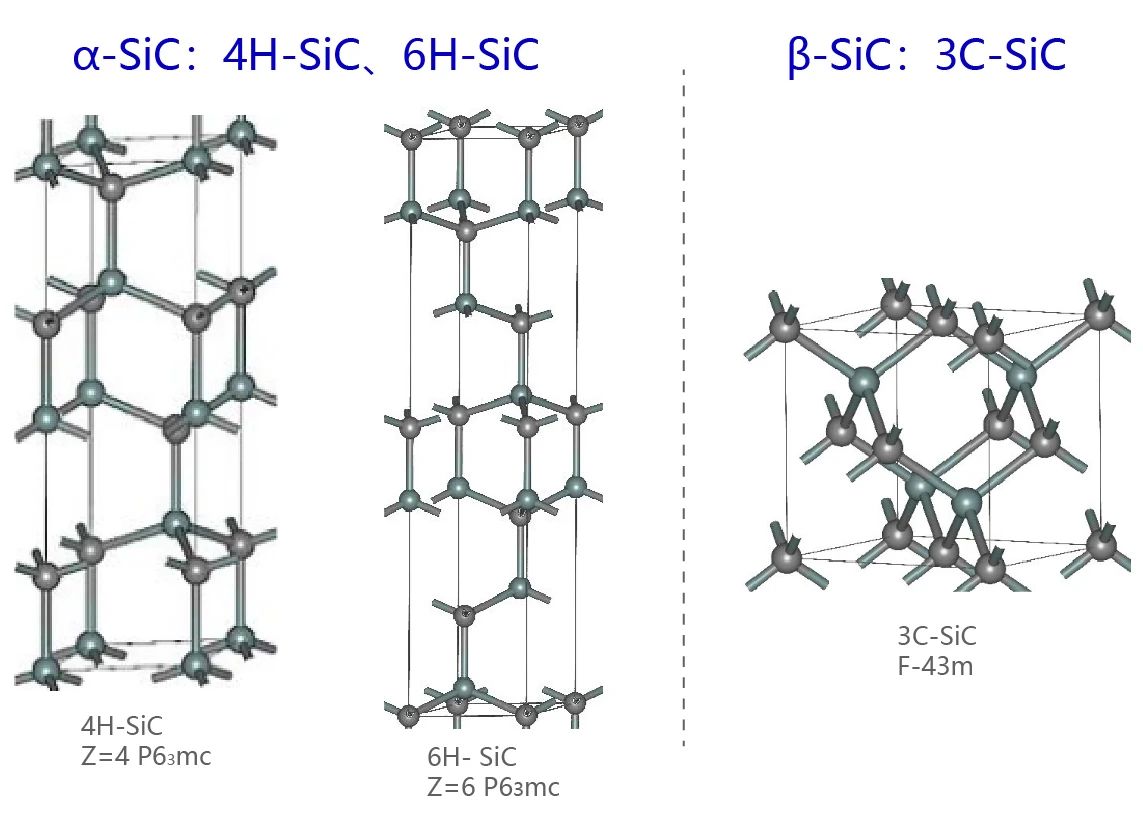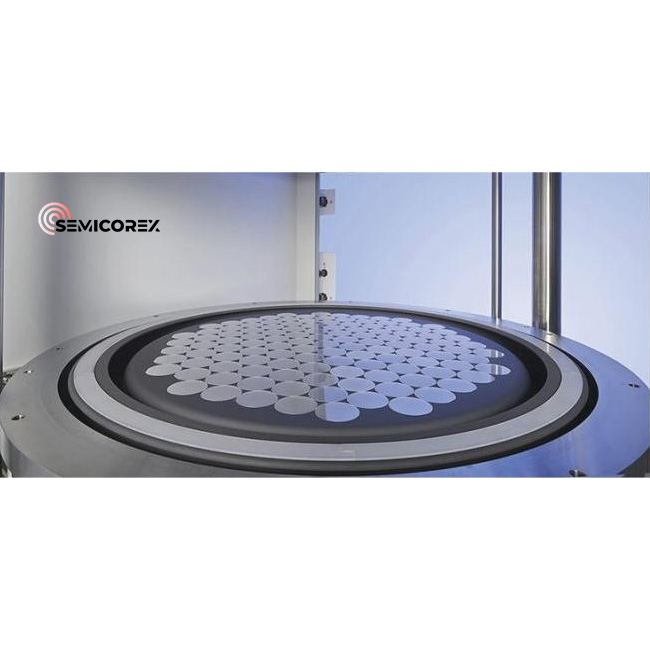
- English
- Español
- Português
- русский
- Français
- 日本語
- Deutsch
- tiếng Việt
- Italiano
- Nederlands
- ภาษาไทย
- Polski
- 한국어
- Svenska
- magyar
- Malay
- বাংলা ভাষার
- Dansk
- Suomi
- हिन्दी
- Pilipino
- Türkçe
- Gaeilge
- العربية
- Indonesia
- Norsk
- تمل
- český
- ελληνικά
- український
- Javanese
- فارسی
- தமிழ்
- తెలుగు
- नेपाली
- Burmese
- български
- ລາວ
- Latine
- Қазақша
- Euskal
- Azərbaycan
- Slovenský jazyk
- Македонски
- Lietuvos
- Eesti Keel
- Română
- Slovenski
- मराठी
- Srpski језик
A Brief History of Silicon Carbide and Applications of Silicon Carbide Coatings
2024-06-03
1. Development of SiC
In 1893, Edward Goodrich Acheson, the discoverer of SiC, designed a resistor furnace using carbon materials—known as the Acheson furnace—to begin the industrial production of silicon carbide by electrically heating a mixture of quartz and carbon. He subsequently filed a patent for this invention.
From the early to mid-20th century, due to its exceptional hardness and wear resistance, silicon carbide was primarily used as an abrasive in grinding and cutting tools.
During the 1950s and 1960s, with the advent of chemical vapor deposition (CVD) technology, scientists like Rustum Roy at Bell Labs in the United States pioneered research into CVD SiC technology. They developed SiC vapor deposition processes and conducted preliminary explorations into its properties and applications, achieving the first deposition of SiC coatings on graphite surfaces. This work laid a crucial foundation for the CVD preparation of SiC coating materials.
In 1963, Bell Labs researchers Howard Wachtel and Joseph Wells founded CVD Incorporated, focusing on the development of chemical vapor deposition technologies for SiC and other ceramic coating materials. In 1974, they achieved the first industrial production of silicon carbide-coated graphite products. This milestone marked significant progress in the technology of silicon carbide coatings on graphite surfaces, paving the way for their widespread application in fields such as semiconductors, optics, and aerospace.
In the 1970s, researchers at Union Carbide Corporation (now a wholly-owned subsidiary of Dow Chemical) first applied silicon carbide-coated graphite bases in the epitaxial growth of semiconductor materials such as gallium nitride (GaN). This technology was crucial for manufacturing high-performance GaN-based LEDs (light-emitting diodes) and lasers, laying the groundwork for subsequent silicon carbide epitaxy technology and becoming a significant milestone in the application of silicon carbide materials in the semiconductor field.
From the 1980s to the early 21st century, advancements in manufacturing technologies expanded the industrial and commercial applications of silicon carbide coatings from aerospace to automotive, power electronics, semiconductor equipment, and various industrial components as anti-corrosion coatings.
From the early 21st century to the present, the development of thermal spraying, PVD, and nanotechnology has introduced new coating preparation methods. Researchers began exploring and developing nanoscale silicon carbide coatings to further enhance material performance.
In summary, the preparation technology for CVD silicon carbide coatings has transitioned from laboratory research to industrial applications over the past few decades, achieving continuous progress and breakthroughs.
2. SiC Crystal Structure and Application Fields
Silicon carbide has over 200 polytypes, primarily categorized into three main groups based on the stacking arrangement of carbon and silicon atoms: cubic (3C), hexagonal (H), and rhombohedral ®. Common examples include 2H-SiC, 3C-SiC, 4H-SiC, 6H-SiC, and 15R-SiC. These can be broadly divided into two major types:

Figure 1: Crystal Structure of Silicon Carbide
α-SiC: This is the high-temperature stable structure and the original structure type found in nature.
β-SiC: This is the low-temperature stable structure, which can be formed by reacting silicon and carbon at around 1450°C. β-SiC can transform into α-SiC at temperatures between 2100-2400°C.
Different SiC polytypes have different uses. For instance, 4H-SiC in α-SiC is suitable for manufacturing high-power devices, while 6H-SiC is the most stable type and is used in optoelectronic devices. β-SiC, aside from being used in RF devices, is also important as a thin film and coating material in high-temperature, high-wear, and highly corrosive environments, providing protective functions. β-SiC has several advantages over α-SiC:
(1) Its thermal conductivity ranges between 120-200 W/m·K, significantly higher than α-SiC’s 100-140 W/m·K.
(2) β-SiC exhibits higher hardness and wear resistance.
(3) In terms of corrosion resistance, while α-SiC performs well in non-oxidizing and mildly acidic environments, β-SiC remains stable under more aggressive oxidizing and strongly alkaline conditions, demonstrating its superior corrosion resistance across a broader range of chemical environments.
Additionally, β-SiC’s thermal expansion coefficient closely matches that of graphite, making it the preferred material for surface coatings on graphite bases in wafer epitaxy equipment due to these combined properties.
3. SiC Coatings and Preparation Methods
(1) SiC Coatings
SiC coatings are thin films formed from β-SiC, applied to substrate surfaces through various coating or deposition processes. These coatings are typically used to enhance hardness, wear resistance, corrosion resistance, oxidation resistance, and high-temperature performance. Silicon carbide coatings have broad applications across various substrates such as ceramics, metals, glass, and plastics, and are widely used in aerospace, automotive manufacturing, electronics, and other fields.

Figure 2: Cross-sectional Microstructure of SiC Coating on Graphite Surface
(2) Preparation Methods
The main methods for preparing SiC coatings include Chemical Vapor Deposition (CVD), Physical Vapor Deposition (PVD), spraying techniques, electrochemical deposition, and slurry coating sintering.
Chemical Vapor Deposition (CVD):
CVD is one of the most commonly used methods for preparing silicon carbide coatings. During the CVD process, silicon- and carbon-containing precursor gases are introduced into a reaction chamber, where they decompose at high temperatures to produce silicon and carbon atoms. These atoms adsorb onto the substrate surface and react to form the silicon carbide coating. By controlling key process parameters such as gas flow rate, deposition temperature, deposition pressure, and time, the thickness, stoichiometry, grain size, crystal structure, and orientation of the coating can be precisely tailored to meet specific application requirements. Another advantage of this method is its suitability for coating large and complex-shaped substrates with good adhesion and filling capabilities. However, the precursors and by-products used in the CVD process are often flammable and corrosive, making production hazardous. Additionally, the raw material utilization rate is relatively low, and the preparation costs are high.
Physical Vapor Deposition (PVD):
PVD involves using physical methods such as thermal evaporation or magnetron sputtering under high vacuum to vaporize high-purity silicon carbide materials and condense them onto the substrate surface, forming a thin film. This method allows for precise control over the coating’s thickness and composition, producing dense silicon carbide coatings suitable for high-precision applications such as cutting tool coatings, ceramic coatings, optical coatings, and thermal barrier coatings. However, achieving uniform coverage on complex-shaped components, particularly in recesses or shaded areas, is challenging. Additionally, the adhesion between the coating and substrate can be insufficient. PVD equipment is costly due to the need for expensive high-vacuum systems and precision control equipment. Furthermore, the deposition rate is slow, resulting in low production efficiency, making it unsuitable for large-scale industrial production.
Spraying Technique:
This involves spraying liquid materials onto the substrate surface and curing them at specific temperatures to form a coating. The method is simple and cost-effective, but the resulting coatings typically exhibit weak adhesion to the substrate, poorer uniformity, thinner coatings, and lower oxidation resistance, often requiring supplementary methods to enhance performance.
Electrochemical Deposition:
This technique uses electrochemical reactions to deposit silicon carbide from a solution onto the substrate surface. By controlling the electrode potential and the composition of the precursor solution, uniform coating growth can be achieved. Silicon carbide coatings prepared by this method are applicable in specific fields such as chemical/biological sensors, photovoltaic devices, electrode materials for lithium-ion batteries, and corrosion-resistant coatings.
Slurry Coating and Sintering:
This method involves mixing the coating material with binders to create a slurry, which is uniformly applied to the substrate surface. After drying, the coated workpiece is sintered at high temperatures in an inert atmosphere to form the desired coating. Its advantages include simple and easy operation and controllable coating thickness, but the bonding strength between the coating and substrate is often weaker. The coatings also have poor thermal shock resistance, lower uniformity, and inconsistent processes, making them unsuitable for mass production.
Overall, selecting the appropriate silicon carbide coating preparation method requires a comprehensive consideration of the performance requirements, substrate characteristics, and costs based on the application scenario.
4. SiC-Coated Graphite Susceptors
SiC-coated graphite susceptors are crucial in Metal Organic Chemical Vapor Deposition (MOCVD) processes, a technique widely used for preparing thin films and coatings in the fields of semiconductors, optoelectronics, and other material sciences.

Figure 3
5. Functions of SiC-Coated Graphite Substrates in MOCVD Equipment
SiC-coated graphite substrates are crucial in Metal Organic Chemical Vapor Deposition (MOCVD) processes, a technique widely used for preparing thin films and coatings in the fields of semiconductors, optoelectronics, and other material sciences.

Figure 4: The Semicorex CVD Equipment
Supporting Carrier: In MOCVD, semiconductor materials can grow layer by layer on the wafer substrate surface, forming thin films with specific properties and structures. The SiC-coated graphite carrier acts as a supporting carrier, providing a robust and stable platform for the epitaxy of semiconductor thin films. The excellent thermal stability and chemical inertness of the SiC coating maintain the substrate’s stability in high-temperature environments, reducing reactions with corrosive gases, and ensuring the high purity and consistent properties and structures of the grown semiconductor films. Examples include SiC-coated graphite substrates for GaN epitaxial growth in MOCVD equipment, SiC-coated graphite substrates for single-crystal silicon epitaxial growth (flat substrates, round substrates, three-dimensional substrates), and SiC-coated graphite substrates for SiC epitaxial growth.
Thermal Stability and Oxidation Resistance: The MOCVD process may involve high-temperature reactions and oxidizing gases. The SiC coating provides additional thermal stability and oxidation protection for the graphite substrate, preventing failure or oxidation in high-temperature environments. This is crucial for controlling and maintaining the consistency of thin film growth.
Material Interface and Surface Properties Control: The SiC coating can influence interactions between the film and substrate, affecting growth modes, lattice matching, and interface quality. By adjusting the properties of the SiC coating, more precise material growth and interface control can be achieved, improving the performance of epitaxial films.
Reducing Impurity Contamination: The high purity of SiC coatings can minimize impurity contamination from graphite substrates, ensuring that the grown epitaxial films have the required high purity. This is vital for the performance and reliability of semiconductor devices.

Figure 5: The Semicorex SiC-Coated Graphite Susceptor as Wafer Carrier in Epitaxy
In summary, SiC-coated graphite substrates provide better base support, thermal stability, and interface control in MOCVD processes, promoting the growth and preparation of high-quality epitaxial films.
6. Conclusion and Outlook
Currently, research institutions in China are dedicated to improving the production processes of silicon carbide-coated graphite susceptors, enhancing coating purity and uniformity, and increasing the quality and lifespan of SiC coatings while reducing production costs. Simultaneously, they are exploring ways to achieve intelligent manufacturing processes for silicon carbide-coated graphite substrates to improve production efficiency and product quality. The industry is increasing investments in the industrialization of silicon carbide-coated graphite substrates, enhancing production scale and product quality to meet market demands. Recently, research institutions and industries are actively exploring new coating technologies, such as the application of TaC coatings on graphite susceptors, to improve thermal conductivity and corrosion resistance.**
Semicorex offers high-quality components for CVD SiC-coated materials. If you have any inquiries or need additional details, please don't hesitate to get in touch with us.
Contact phone # +86-13567891907
Email: sales@semicorex.com




